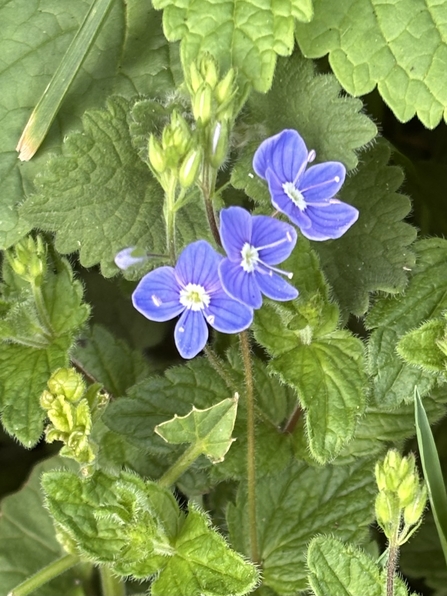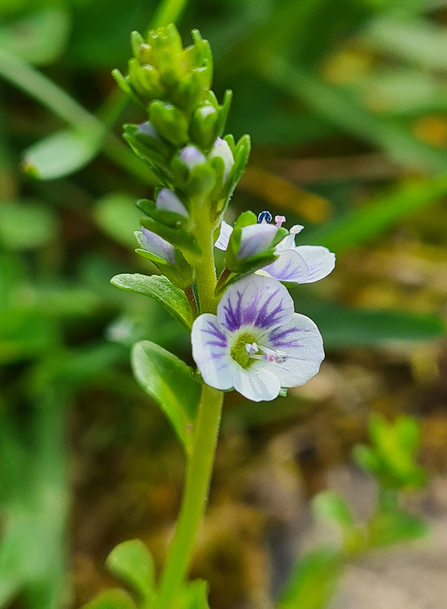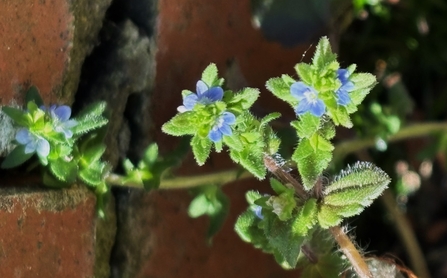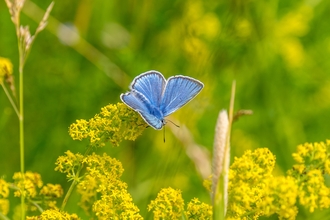Hopefully, you’ve had the opportunity to experience one of our great natural spectacles: a bluebell wood in spring. But, if you’re not lucky enough to have a bluebell wood on your doorstep, don’t be downhearted; other less obvious, but equally delightful, blue flowers are likely to be growing close by, and late spring is the best season in which to find them.
I recently found a delightful sprinkling of floral sapphires in my own garden! These are all members of the speedwell family, a group of trailing plants common throughout Essex, which have delicate, four-petalled flowers, mostly in varying shades of blue, from palest baby all the way through to vibrant mazarine. Three of the species I found here in north-west Essex are native British wildflowers, whilst the other was introduced in the early 20th century.
Let’s start with the most striking member of the family; the germander speedwell (Veronica chamaedrys). This plucky little plant has cobalt-blue flowers, each with a striking white centre and protruding stamens. They grow in small clusters, held aloft at the ends of their trailing stems. Despite its diminutive size, it’s really unmissable on sunny days, sparkling like undiscovered gemstones from between the fresh, green blades of grass of an uncut lawn. I find it most frequently growing under trees, along hedge lines and next to paths. Today, mine were growing in the edge of the front lawn. “Germander” is said to be derived from Old English words meaning “leaves like the oak”, though I confess that they don’t look much like oak leaves to me!






